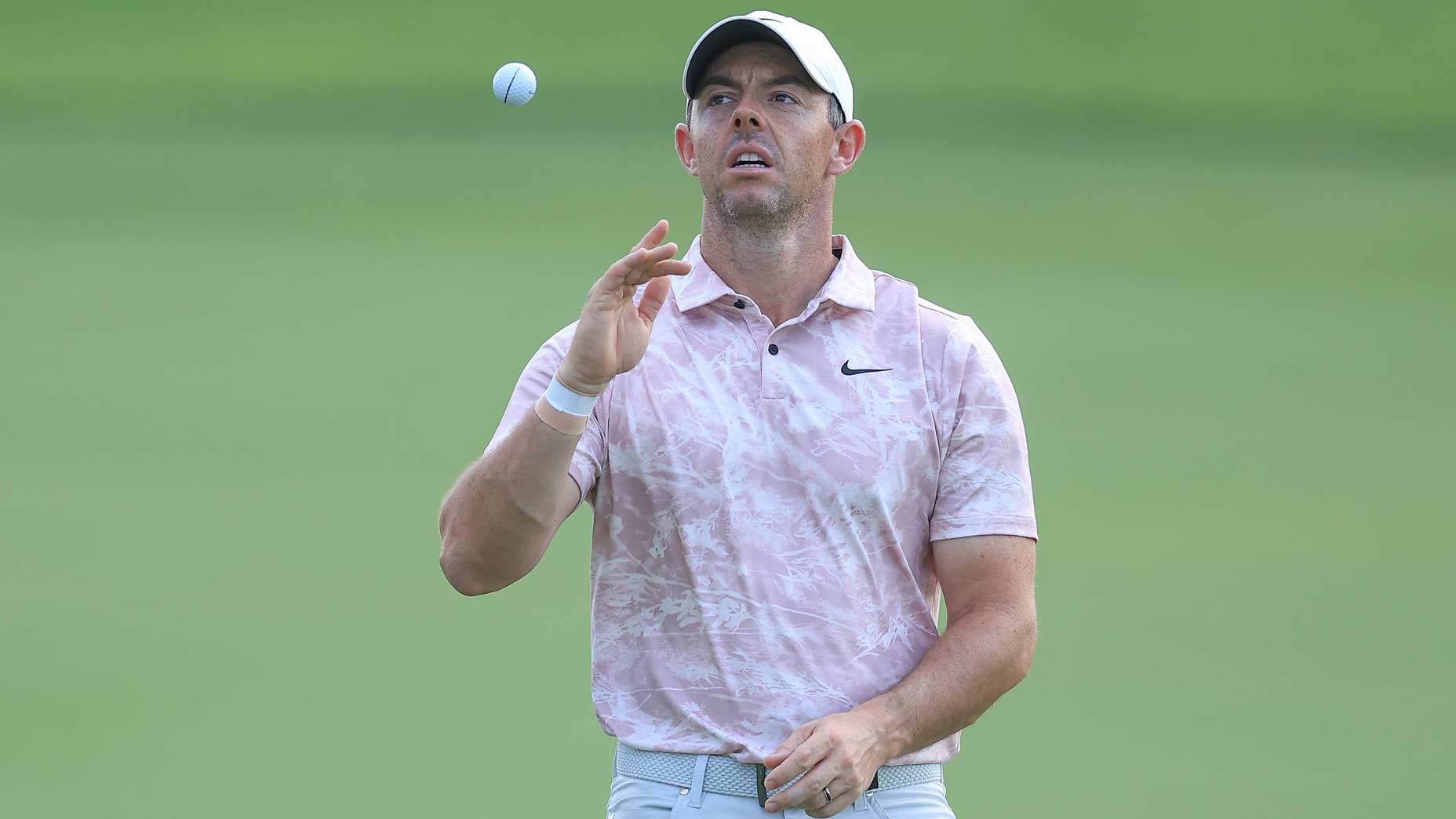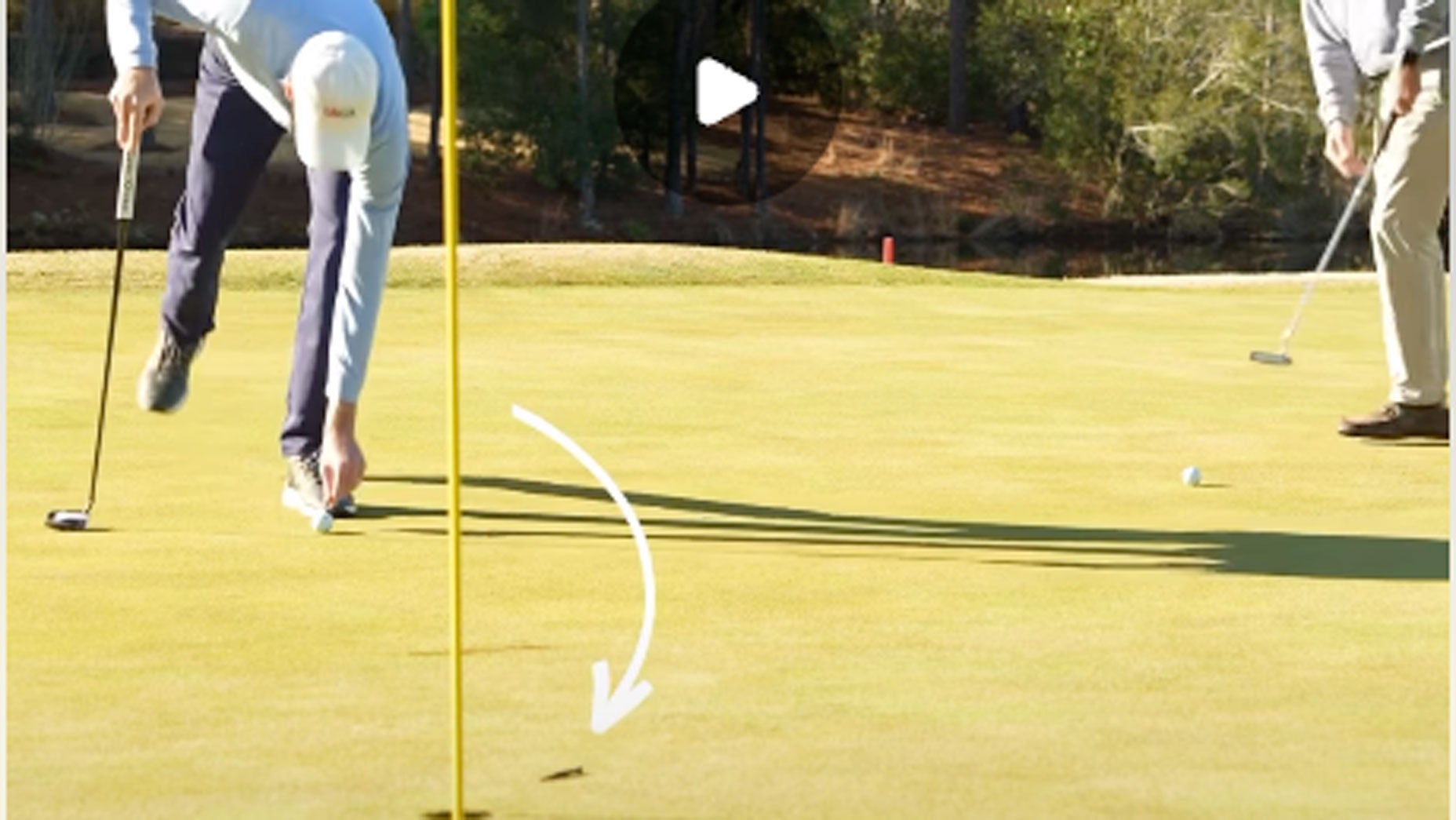Perhaps you’re a well-adjusted person. Perhaps you shrugged your shoulders when news broke about a golf-ball rollback decision on Friday evening.
There are bigger fish to fry, you thought innocently, pushing the story into the recesses of your mind from the warmth of a night off. And why would anyone care that much about golf balls?
You, dear reader, were both right and wrong. There are things in this world worth caring about more than the distance a golf ball travels when struck by a golf club; things like happiness and fulfillment and growth on the spiritual plane. But there also are few things, if any at all, that matter more to golf diehards than the outcome of the great distance debate.
This is why, at about 7:30 p.m. on Friday, I found myself logging in for my second work shift of the evening, an abbreviated affair to understand exactly what had happened — and where we were headed.
Perhaps in the days since you started educating yourself on the process. You’ve seen Instagram posts from golfers complaining about the scourge on distance, the no-fun attack on bombs, or tweets defending the decision to roll back the ball, maybe even criticizing members of the golf establishment for their handling of the issue writ large.
In either case, you’ve probably already been exposed to the political orthodoxy in one way or another, which means you should probably also get all the facts before you develop an opinion of your own. Below, we’ve done our best to lay out the issue as we know it currently — the facts, the changes and each side of the debate — to make you more educated in your rollback conversations. Let’s dive in.
The Facts
What happened?
After years of debate and research, golf’s two governing bodies (the USGA and R&A) are reportedly on the brink of announcing a rule change to “roll back” the golf ball for everyone. In basic terms, the change will make the ball travel shorter distances when hit at the same swing speed.
The USGA and R&A are the stewards of the rules of golf, and part of that power includes oversight over the legality of gear used in competition. By changing the rules of what is “conforming,” the governing bodies can make the current technology illegal, forcing equipment manufacturers to create a ball that travels shorter distances when hit at the same speed.
While the full scope of the changes is not yet known, they are expected to represent a loss of distance throughout the bag for all players.
Why do we care about a golf-ball rollback?
If you play golf, you care about a rule that could change the performance characteristics of golf balls. Given the rule change will affect all golfers, not just the pros, you’re likely to be affected by this change, too.
Why are the USGA and R&A rolling back the ball?
Golfers are hitting the ball further today than ever in the sport’s history — a change owed marginally to boosts in athleticism and skill, and primarily to boosts in equipment technology. Those changes have become exceptionally pronounced in the pro game, where men’s professional golfers have exponentially increased their distances by such lengths, they have threatened to make many of golf’s greatest courses obsolete from tournament play.
Bunkers and hazards exist for a reason: to punish bad golf shots. When golfers can easily hit tee shots well over all bunkers and hazards, they can avoid the traditional difficulty or strategy assigned to that hole. Now, instead of a good, accurate shot being rewarded — and a bad, inaccurate shot being punished — the crux of competition becomes focused on who can hit the ball farthest. This strategy was on full display at the 2020 U.S. Open at Winged Foot, when Bryson DeChambeau hit 23 of 56 fairways (41 percent) for the week, yet won the tournament by six shots.
As a result of this strategy reaching ubiquity in men’s pro golf, tournament hosts poured resources into course changes to preserve the course (and tournament’s) strategic integrity and entertainment value. Most of these changes include growing rough and lengthening tee boxes — tweaks that cost money, require significantly greater environmental resources and affect other issues like pace of play. Take for example Masters host Augusta National, which has invested millions in recent years to lengthen its course to “maintain” the original intent of founders and architects Bobby Jones and Alister MacKenzie. The club recently invested some $26 million on a small parcel of land to lengthen and “restore the integrity” of its 13th hole.
In short, golf’s governing bodies view the issue of distance as an existential crisis in golf — one that threatens to create an unusually large economic, environmental and sustainability issue. Continuing to do nothing about the problem, they say, would have far-reaching implications for golf.
If the pro game is the issue, why not just roll back the ball for men’s pro golfers?
The governing bodies floated this idea — called “bifurcation” — already … and it was roundly shot down. You might remember the “Model Local Rule” proposal of earlier this year, which proposed a rule for elite tournament play that would require a shorter golf ball in competitions.
Pros and equipment manufacturers largely panned the rule, arguing it went against golf’s long-standing ideals of meritocracy, while the PGA Tour and PGA of America announced they would not abide by the new rule in competition. The governing bodies listened to the criticism.
“The game was not happy with the Model Local Rule,” R&A chief Martin Slumbers said in an interview last week. “There was a view that it would create a bifurcated game at the elite level. It was a very strong pushback against that. The PGA Tour was very public about it. So was the PGA of America. A number of players spoke out. And our job is to listen.”
The Opinions
ANTI-ROLLBACKERS
Why are the equipment manufacturers against the rollback?
Because they’re are trying to run a business, and changes to their business fundamentals (like equipment rules changes) threaten to upend their bottom line (not to mention costing millions to implement). Changes to the ball today can affect manufacturer product plans as far out as 2030, and can have far-reaching implications on other products like clubs.
In truth, the manufacturers were long the best argument against bifurcation for this reason: It made no sense — financially or otherwise — for ball companies to spend millions creating a product line that would be played by less than 1 percent of the golf public.
Considering the safest, most cost-effective option would be to change nothing at all, this is the option most ball companies have favored.
Why are the pros against the rollback?
The answers vary, but one common thread is this: golf is already great.
Some pros are against the rollback because they see it as a threat to their livelihood. Some view it as an attack on the “fun” in golf. Some are on payroll for equipment manufacturers and feel an instinct (or compulsion) to stick up for them. Some, like Justin Thomas, view it as a “solution for a problem that doesn’t exist.”
“If you can swing 127 miles an hour, like, power to you. I mean, people are running faster, so, what, are they just going to make the length of a mile longer so that the fastest mile time doesn’t change, or are they going to put the NBA hoop at 13 feet because people can jump higher now?” he said earlier this year. “No. It’s evolution. We’re athletes now.”
Of course, other sports, including running and basketball, have changed rules and equipment to combat similar threats to competitive integrity. But Thomas’ point stands: In his view, these rules go too far to address a problem — hitting the ball too far and too straight — that doesn’t exist for most golfers, even the pros.
Why are regular golfers against the rollback?
Oh, you enjoy hitting the ball shorter distances?
This one needs very little explanation. Those of us who already struggle to hit the ball consistently straight and far are unlikely to be super-jazzed about a rule that threatens to harm that even further.
‘Don’t understand the anger’: Rory McIlroy hits back at golf-ball rollback criticsBy: Kevin Cunningham
PRO-ROLLBACKERS
Why are the governing bodies in favor of the rollback?
Because, the governing bodies say, golf’s long-term sustainability, entertainment value and historical importance are tied to a rollback.
“Our responsibility is to the long-term future of the game. Along with the USGA, the R&A is a custodian of the game,” Slumbers said. “We’re responsible for our period of time, something that has gone on for hundreds of years and will go on for hundreds more. So, we are listening.”
The governing bodies are afforded the flexibility to look beyond spreadsheets and five-year outlooks in making decisions about the future of golf. They’re also afforded the freedom to look beyond the length of one’s own playing career. The long game is what has brought the governing bodies to this moment, and it’s why a rollback shouldn’t surprise anyone.
“We have been very clear, as has Mike Whan at the USGA,” Slumbers said. “There are only three options: We can bifurcate; you change the whole game; or you do nothing. And doing nothing is not an option. We stand by that.”
Why are the pros in favor of the rollback?
The answers (also) vary, but one common thread is this: A rollback will make golf better.
Some players view the decision to roll back the ball as key to enforcing rules of golf that have been eradicated over the last several decades. Some view it as paradoxically important to improving the entertainment value of tournament play, because lesser distances will expand the gap between good and bad shots. Some view it as a necessary evil after the criticism given to the Model Local Rule and the idea of bifurcation.
“I don’t understand the anger about the golf ball roll back,” tweeted Rory McIlroy on Sunday. “It will make no difference whatsoever to the average golfer and puts golf back on a path of sustainability. It will also help bring back certain skills in the pro game that have been eradicated over the past 2 decades.”
Also, as McIlroy and others have pointed out, golf is already bifurcated. The gear used by many of the best players in the men’s game is totally different from the gear that any average player uses in their bag, thanks to adjustments like tour-specific balls, hot-melding, lead tape and others.
“You think we play the same stuff you do?” McIlroy said. “Bifurcation was the logical answer for everyone, but yet again in this game, money talks.”
I don’t understand the anger about the golf ball roll back. It will make no difference whatsoever to the average golfer and puts golf back on a path of sustainability. It will also help bring back certain skills in the pro game that have been eradicated over the past 2 decades.…
— Rory McIlroy (@McIlroyRory) December 3, 2023
Why are regular golfers in favor of the rollback?
Because regular golfers are golf fans, too, and a rollback has the potential to drastically improve the entertainment value of the pro game in a few ways.
Players hitting shorter drives should make tournament play more strategic and thought-provoking, could lead to the addition of shorter great courses (like Merion) earning more tournament opportunities, and could help increase the disparity between the furthest and shortest players. Those are all things that could improve the enjoyment of tuning into a golf broadcast every Sunday.
From a personal standpoint, there’s also an argument to be made that a 10-yard distance dropoff matters less to our scores than we’d like to think it does.
“I don’t believe an average golfer giving up 5-10 yards off the tee is going to have a material effect on their actual score, handicap or enjoyment of the game,” McIlroy said.











